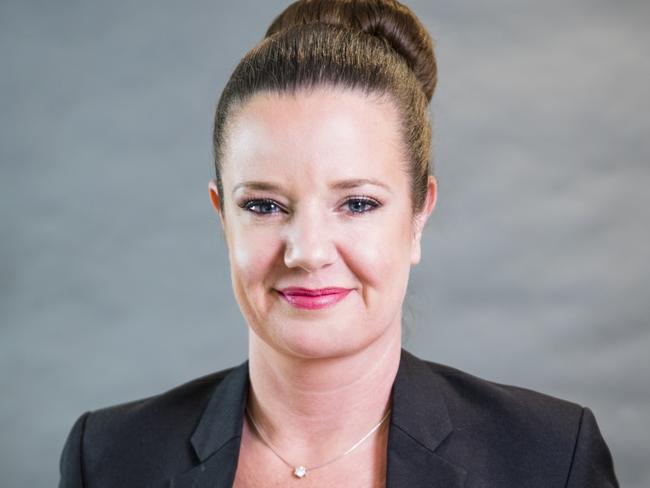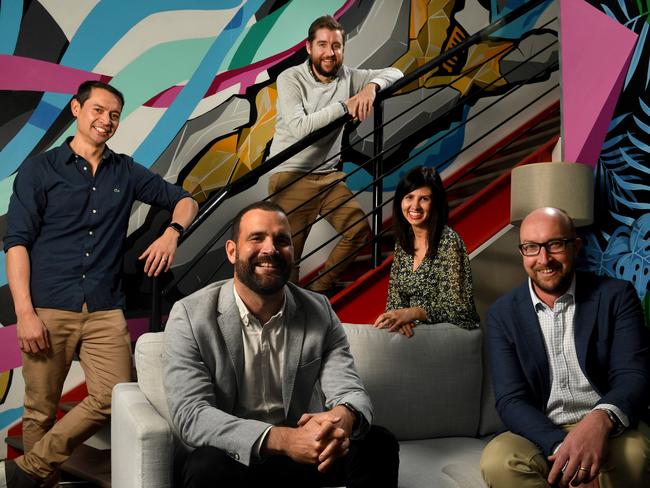Future of work: businesses embrace flatter hierarchies and networked structures
Companies were already moving away from top-down hierarchical structures but the coronavirus pandemic and resulting shift to remote work has accelerated the trend.
Careers
Don't miss out on the headlines from Careers. Followed categories will be added to My News.
- Expert predictions for the 2021 employment landscape
- Tips for safely returning to the office after COVID
Traditional workplace hierarchies are disappearing, with workers given more autonomy and decision-making powers as middle management dwindles.
Although most Australian businesses still currently have hierarchical structures, exclusive data and insights from Dynata find 27 per cent of surveyed Australians now consider their employer to have a “networked structure” or “flattened hierarchy” – and another one in 10 believe their employer is moving in that direction.
Executive recruitment expert and director of career development program Path to Promotion Ineke McMahon said the COVID-19 pandemic was accelerating the move toward flatter models as remote work became more common.

“The ability for more staff to work remotely means that leaders and HR have had to respond to ensure that they have structures in place to measure outcomes and performance, rendering a lot of middle management roles redundant,” she said.
“Flatter organisations are based on fewer layers, thereby opening up lines of communication, collaboration and a reduction in red tape.
“(They are about) making things more transparent and allowing for more effective communication up and down the line.”
Mrs McMahon said the emphasis was on collaboration rather than ‘command and control’.
“One of the advantages of this environment is that more people are getting direct access to their CEO,” she said.
“Decisions can be made more quickly, and many staff are reporting a feeling of increased engagement and a feeling of greater autonomy.
“The downsides of a flatter structure can include a feeling of less of a ‘career path’ if there isn’t a middle management role to aspire to, and also some people prefer having a specific boss to report to on a day-to-day basis.”

Adelaide-based communications and web development agency JP Media made the conscious decision to promote a flattened management model for its 12 staff.
Managing director Patrick Anderson said when the business began “everyone really just needed to pitch in and do what was needed” but as it grew it adopted a more traditional hierarchy model.
“More recently, we have really leaned back towards a more flattened hierarchy, which we now want to preserve and ingrain in our operating model,” he said.
“Trying new things is always important in running a small business so it has taken a few iterations, but we feel we have landed on the ideal model currently.”
Mr Anderson said the company structure was built around collaboration and putting people with the best skills on the right work.
“This ensures our staff enjoy the work they are doing, which leads to a better working environment,” he said.
“If you are going to do this effectively, you need to leave titles at the door.”

JP Media general manager Daniel Crago believed a flatter hierarchy would “absolutely” be the way of the future for most businesses.
“The days of authoritative corporate structures are numbered,” he said.
“While titles will stay around for a while and companies will need to have an organisational chart, this will be more just for ease of explanation.”
MORE NEWS
Where the work is in your part of SA
Where the work is in your part of QLD
Where the work is in your part of NSW
Where the work is in your part of VIC
Where the work is in your part of the NT
Where the work is in your part of TAS
Mr Crago said the company was now able to achieve better results in a much shorter time frame.
“We have taken out the ‘doing business with yourself’ component and simply have the best people working together to achieve the outcome,” he said.
“This also makes our business very competitive in the market.
“From a cultural perspective, our people are empowered to make decisions and take ownership which boosts moral and confidence, as it positions them as the experts.”
He said leaders required the same skills whether they worked within traditional or flatter hierarchies, but that they were more obvious in the latter.
“Empowerment is one of the most powerful tools in any business and by allowing people to have the confidence, ownership and contribute to the outcome, they will really grow in their role,” he said.
“Good communication, integrity and trust are also critical, as these underpin the smooth operation of the business.”

